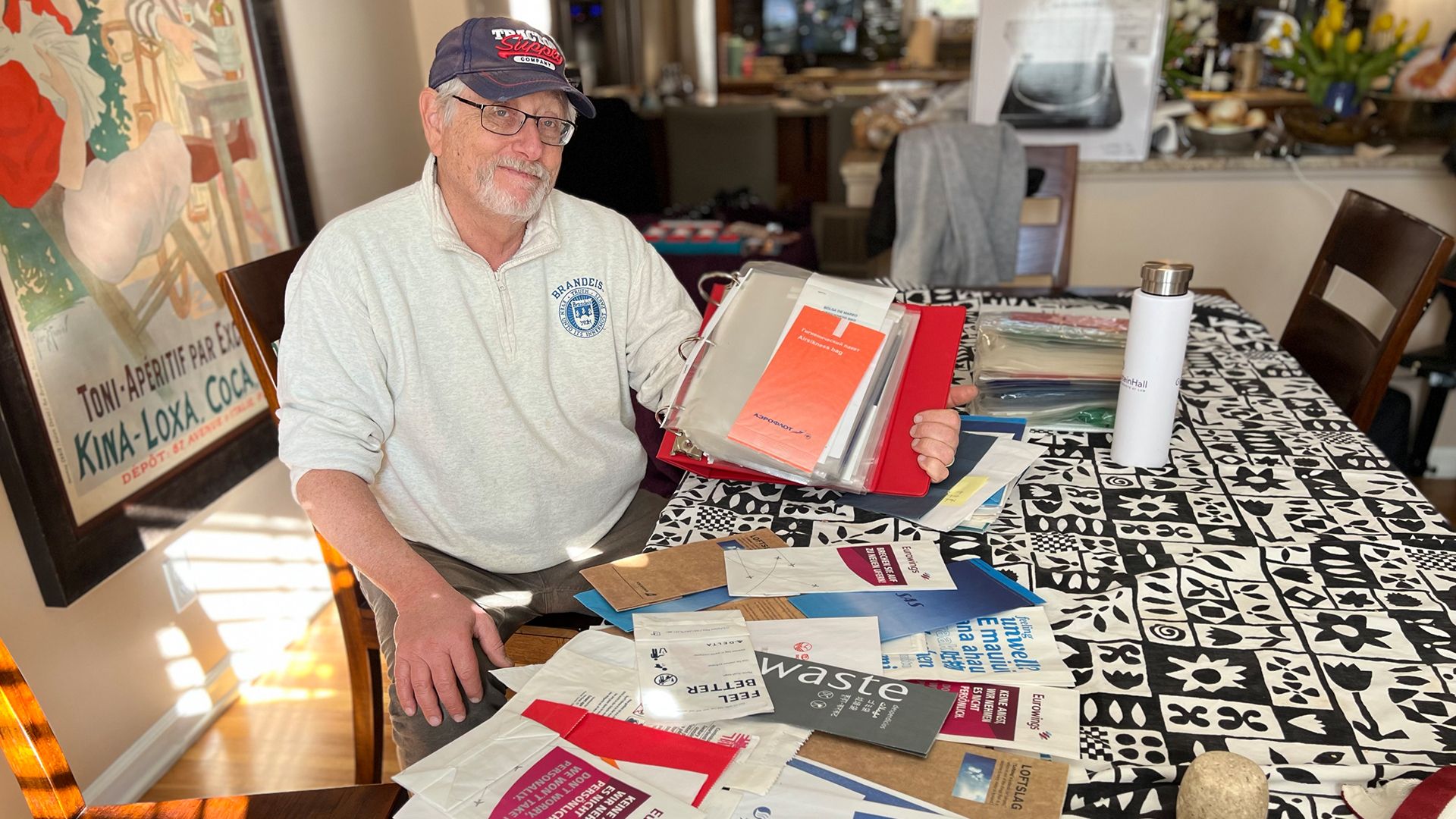🤮 The decline and fall of barf bags

- Jennifer A. Kingson, author ofAxios What's Next

Lloyd Sobel and his collection of air sickness bags. Photo courtesy of Clifford A. Sobel.
Air sickness bags have been disappearing from the seatback in front of you for years, but the pandemic has made them vanish almost entirely — to the particular disappointment of people who collect them.
Why it matters: "Baggists," as collectors are sometimes known, have been known to pay as much as $500 for a prized barf bag, which usually comes from a long-defunct airline.
- There are online clubs in which members trade the bags like baseball cards.
- "Collectors prize bags for their humor, such as a Finnaviation bag depicting a reindeer throwing up ice cubes, or a bag from former German airline Hapag-Lloyd stating: 'Thank you for your criticism,'" a Wall Street Journal article noted.
Where it stands: Slate reports that vomiting in airplanes seems to have grown less common, with fewer passengers "joining the bile-high club."
What they're saying: "It's a very easy collectible," says Lloyd Sobel of Centennial, Colorado, who started picking them up decades ago when he was traveling frequently for business.
- Sobel, a middle school science teacher, keeps his bags in photo albums with plastic sleeves, organized alphabetically by airline.
- Friends and relatives who know of his hobby often give him bags from obscure airlines when they travel overseas.
- Sobel's prized bags include one from Aeroflot, the Russian carrier, and Eastern Air Lines, which used to connect New York to Boston and Washington, D.C.
One airline he's missing? The Trump Shuttle, which operated for about four years, ending in 1992.